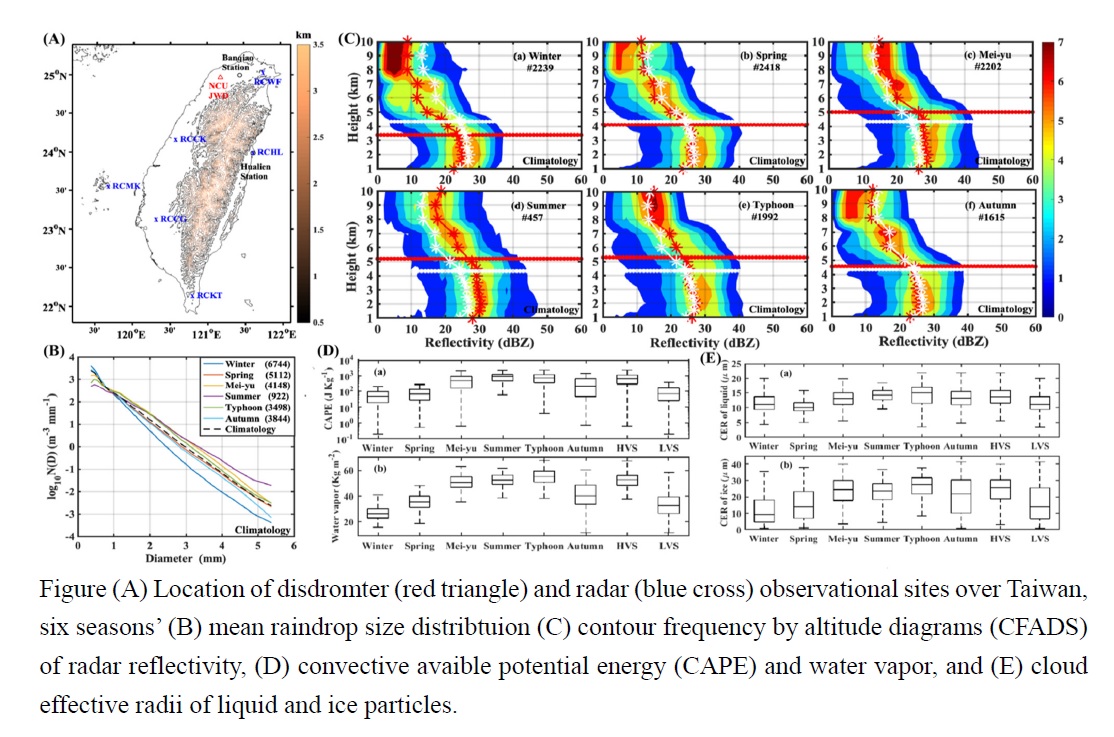Graphical Abstract
Lee, M.-T., P.-L. Lin, W.-Y. Chang, B. K. Seela, and J. Janapati, 2019: Microphysical characteristics and types of precipitation for different seasons over north Taiwan. J. Meteor. Soc. Japan, 97, 841-865.
https://doi.org/10.2151/jmsj.2019-048
Graphical Abstract with highlights
Plain Language Summary: For Taiwan region, previous studies on raindrop size distribution are confined to the case studies or short-term observations. For the first time, over north Taiwan, by using long-term (10 years) data sets of disdrometer and radars, rain and cloud microphysical characteristics of six seasons (summer, winter, spring, mei-yu, autumn, and typhoon) are illustrated.
Highlights:
- Long-term raindrop size distribution (RSD) and contour frequency by altitude diagrams (CFADs) are used to quantify the microphysical processes in six seasons (winter, spring, mei-yu, summer, autumn, and typhoon) over north Taiwan.
- Clear differences in raindrop size distributions of six seasons are noticed with higher concentration of big (small) drops in summer (winter).
- With the aid of radar reflectivity profiles, six seasons are grouped into higher vertical structure (HVS: summer, typhoon, and mei-yu) seasons and low vertical structure (LVS: winter, spring, and autumn) seasons.
- The variations in microphysical processes in six seasons, that are digested through radar reflectivity profiles, remote sensing and re-analysis data sets, are responsible for the variations in the RSD.







